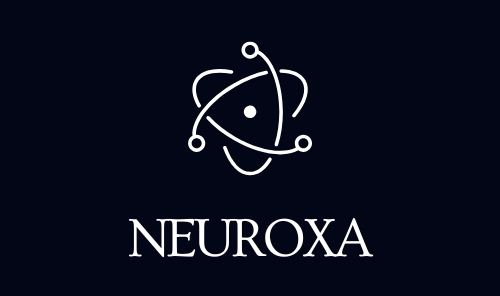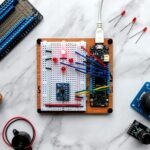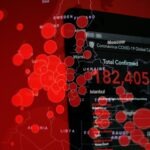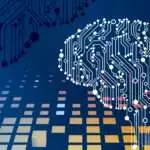The Existential Threat: Q-Day and the Crypto-Apocalypse
For years, the threat of quantum computing was dismissed as a distant theoretical problem. In 2025, it is an urgent strategic risk demanding immediate action from every CISO and CIO. The risk is twofold:
- The Existential Threat: Q-Day and the Crypto-Apocalypse
- Section 1: Understanding the Quantum Vulnerability
- Section 2: NIST Standardization—The New Crypto Stack
- Section 3: AI and ML in PQC Migration—The Defense Strategy
- Section 4: The CIO/CISO Quantum Readiness Action Plan
- Phase 1: Inventory and Prioritization
- Phase 2: Hybrid Deployment
- Phase 3: Prepare for Digital Signatures
- Conclusion: The Ultimate Supply Chain Security Effort
- Shor’s Algorithm: A sufficiently powerful quantum computer running Shor’s algorithm can factor large prime numbers exponentially faster than any classical machine, instantly breaking RSA and Elliptic Curve Cryptography (ECC)—the foundations of global public-key infrastructure, digital signatures, and TLS security.
- Harvest Now, Decrypt Later (HNDL): Cyber adversaries, including nation-states, are already intercepting and storing vast amounts of encrypted, high-value data (financial transactions, military communications, intellectual property). They anticipate decrypting it effortlessly when a fault-tolerant quantum computer, known as a Cryptographically Relevant Quantum Computer (CRQC), arrives.
The timeline is accelerating. Predictions from the Metaculus platform have moved the median forecast for when a CRQC can break RSA from 2052 to 2034. Given that a full enterprise-wide cryptographic migration takes 5 to 10 years, the window for preparation is closing rapidly.
Section 1: Understanding the Quantum Vulnerability
While media coverage focuses on breaking RSA, the quantum threat is broader:
The Breakage: Public Key Infrastructure (PKI)
The most critical vulnerability lies in Key Exchange Mechanisms (KEMs) and Digital Signature Algorithms (DSAs). All current standards (RSA, Diffie-Hellman, ECDSA) rely on the mathematical difficulty of factoring large numbers or solving the Discrete Logarithm Problem. Shor’s algorithm trivializes both. The priority is replacing these algorithms with Post-Quantum Cryptography (PQC).
The Mitigation: Symmetric Algorithms
Symmetric encryption (like AES-256) and hashing algorithms (like SHA-256) are far more resilient. While Grover’s algorithm provides a quadratic speedup for searching through possible keys, doubling the key length (e.g., from AES-128 to AES-256) is sufficient to maintain security levels. The primary focus of the migration must be asymmetric encryption.
Section 2: NIST Standardization—The New Crypto Stack
The transition from vulnerable classical algorithms to quantum-resistant ones is governed by the National Institute of Standards and Technology (NIST). Their multi-year process culminated in 2024–2025 with the first set of standardized PQC algorithms, largely based on Lattice-Based Cryptography.
The Core Algorithms (FIPS Standards)
- ML-KEM (CRYSTALS-Kyber): Standardized for Key Encapsulation Mechanisms (KEMs). This is the new quantum-safe method for key exchange, directly mitigating the HNDL risk.
- ML-DSA (CRYSTALS-Dilithium): Standardized for Digital Signatures (DSAs). This will replace ECDSA and RSA signatures for code signing and digital certificates.
- SLH-DSA (SPHINCS+): A hash-based signature algorithm standardized as an alternative, offering extreme long-term security based on different mathematical assumptions.
The Critical Backup
In March 2025, NIST selected HQC (Hamming Quasi-Cyclic) as a fifth, final backup algorithm for key encapsulation. This decision is crucial because it ensures algorithmic diversity. If an unexpected quantum attack were found against the lattice mathematics of ML-KEM, the industry would have an immediate, standardized backup based on code-based cryptography.
Section 3: AI and ML in PQC Migration—The Defense Strategy
PQC algorithms are generally less efficient than their classical counterparts, resulting in larger key sizes and slower handshake times. This is where AI and Machine Learning become indispensable tools for managing the transition.
1. Cryptographic Inventory and Agility
A typical enterprise environment contains tens of thousands of cryptographic instances (certificates, SSH keys, VPNs, microservices). Manually inventorying and updating this is impossible.
- AI Inventory: ML-powered scanners are used to identify every instance of vulnerable RSA/ECC algorithms across the network and software supply chain, prioritizing based on data sensitivity and lifespan (e.g., data that needs confidentiality for 15+ years).
- Agility Orchestration: AI systems can be used for Dynamic Cryptographic Agility. They monitor network performance and threat intelligence to decide, in real-time, whether to use a classical, PQC, or Hybrid (both classical and PQC combined) cipher suite for a given connection. This allows for rapid switching between algorithms without downtime, a core requirement for quantum resilience.
2. Performance Optimization
Larger PQC keys can increase TLS handshake latency and strain resource-constrained devices (like IoT sensors).
- ML Tuning: Machine Learning algorithms can be used to optimize PQC parameters (e.g., the lattice dimensions in ML-KEM) to achieve the smallest possible key size while maintaining the required security level. This minimizes the performance hit on cloud infrastructure and consumer applications.
- Side-Channel Attack (SCA) Hardening: The greatest risk to PQC is its implementation on hardware. Researchers have demonstrated that AI/ML models can analyze side-channel leakage (power consumption, electromagnetic radiation) from a processor running a PQC algorithm and successfully extract the secret key. AI is now being deployed defensively to analyze the processor’s output during execution, identify leakage points, and automatically adjust the cryptographic mask, hardening the physical implementation against AI-powered cryptanalysis.
Section 4: The CIO/CISO Quantum Readiness Action Plan
The migration to PQC is a security imperative driven by compliance, notably the NSA’s CNSA 2.0 requirements (mandating PQC use by 2030 for sensitive systems). The time for strategic planning is over; implementation must begin now.
Phase 1: Inventory and Prioritization
- Audit Everything: Use AI scanning tools to catalog all public-key usage and corresponding data classification (HNDL targets).
- Prioritize Confidentiality: The immediate focus must be on KEMs (Key Exchange). Migrate immediately to Hybrid Key Exchange (classical + ML-KEM) for all long-lived confidential data streams (e.g., archives, stored VPN keys).
Phase 2: Hybrid Deployment
- Adopt Hybrid Suites: Begin deploying hybrid cipher suites (which perform both classical and PQC key exchange). This maintains compatibility with the existing PKI while guaranteeing quantum security if the classical algorithm is broken.
- Update PKI/HSMs: Start purchasing and deploying Quantum-Safe Hardware Security Modules (HSMs), which are necessary to securely store the large PQC keys required for certificates and root CAs.
Phase 3: Prepare for Digital Signatures
- Integrate ML-DSA/SLH-DSA: While KEMs are the confidentiality priority, begin testing ML-DSA and SLH-DSA for code signing and digital certificates. The migration of digital certificates is the most complex task due to global PKI dependencies and the need for new PQC-compliant Root CAs.
Conclusion: The Ultimate Supply Chain Security Effort
The transition to PQC is the largest cryptographic overhaul in internet history. It is less a “fix” and more a fundamental, multi-year re-engineering of the entire digital infrastructure. Failing to act now means condemning currently sensitive data to future decryption and facing significant compliance penalties.
AI and ML are the two necessary tools for successful migration. They provide the speed and agility required to manage the inventory, optimize the performance bottlenecks of PQC, and defend the implementations against advanced side-channel threats. For the enterprise, the migration is non-negotiable—it is the ultimate act of due diligence for the data entrusted to you.
Source List
- NIST:PQC Standardization Process Updates and FIPS Publications (2025)
- Metaculus:Quantum Computing Factoring Prediction (2025 Update)
- Link: Metaculus Q-Day Forecast
- NSA (U.S.):Commercial National Security Algorithm Suite (CNSA 2.0) (2025 Reference)
- DigiCert/Post-Quantum:AI and Machine Learning in Post-Quantum Cryptography (2025)
- Link: AI in PQC Development
- Cloudflare:What is Post-Quantum Cryptography (PQC)? (2025)
- Link: Cloudflare PQC Overview









